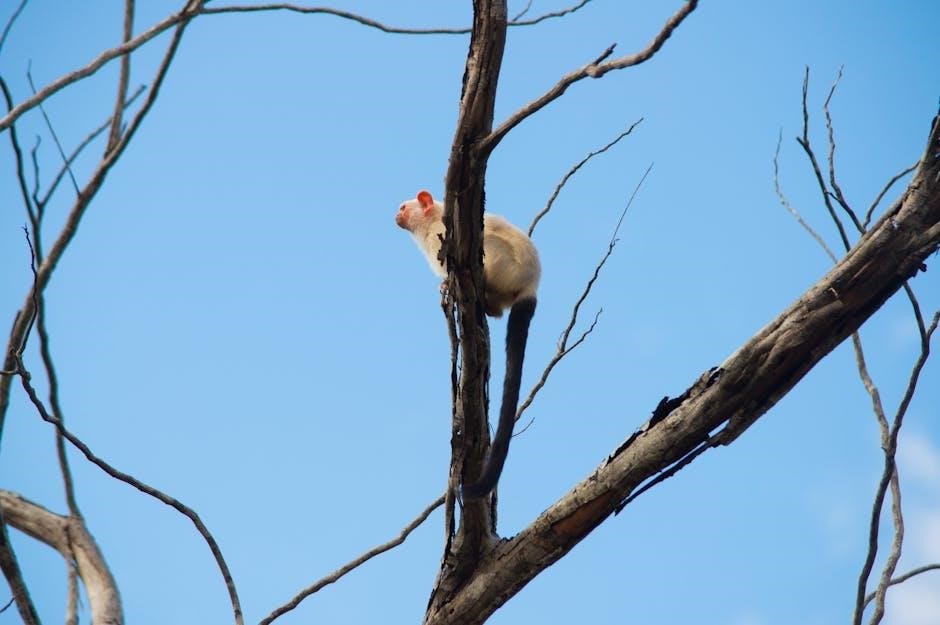This study explores the potential of seeds as natural deworming agents, emphasizing their traditional use and pharmacological properties to address parasitic infections effectively and sustainably.
1.1. Background of the Study
Parasitic infections remain a significant public health challenge, particularly in rural and underserved communities worldwide. Synthetic deworming agents, while effective, often pose concerns related to resistance, side effects, and cost. Traditional medicine has long utilized seeds from various plants as natural deworming agents due to their bioactive properties. These seeds are readily available, cost-effective, and align with sustainable health practices. Preliminary studies suggest that certain seed extracts exhibit antiparasitic activity, but their efficacy and safety require rigorous scientific validation. This study aims to bridge the gap between traditional knowledge and modern pharmacological research, exploring the potential of seeds as alternative deworming agents.
1.2. Importance of Seeds as Deworming Agents
Seeds have garnered significant attention for their potential as natural deworming agents due to their accessibility, cost-effectiveness, and sustainability. Many plant seeds contain bioactive compounds with antiparasitic properties, offering a promising alternative to synthetic drugs. Their natural origin reduces the risk of adverse effects, making them safer for long-term use. Additionally, seeds are widely available in rural areas, where parasitic infections are prevalent, making them a practical solution for underserved populations. This approach aligns with global efforts to promote traditional medicine and reduce reliance on synthetic chemicals. Exploring seeds as deworming agents could pave the way for innovative, eco-friendly health interventions.
1.3. Objectives of the Study
The primary objective of this study is to investigate the efficacy of seeds as natural deworming agents. It aims to identify and analyze the bioactive compounds present in selected seeds, evaluate their antiparasitic activity through in vitro and in vivo testing, and compare their effectiveness with synthetic deworming agents. Additionally, the study seeks to assess the safety and toxicity profiles of these seed extracts to ensure their suitability for human and veterinary use. By achieving these objectives, the research hopes to contribute to the development of sustainable, natural alternatives for parasite control, addressing both human and animal health challenges.
1.4. Scope and Limitations

This study focuses on evaluating the potential of seeds as natural deworming agents, concentrating on their bioactive compounds and antiparasitic properties. It includes in vitro and in vivo tests to assess efficacy and safety. However, the research is limited to specific seed species, such as pumpkin and papaya, and does not explore all plant varieties. Additionally, the study does not investigate the long-term effects or mechanisms of resistance development. Geographical and cultural factors influencing seed use are also beyond the scope. The findings are based on controlled laboratory conditions, and human trials are not conducted, which may limit direct applications to clinical settings.

Literature Review
Examining existing studies on seeds as deworming agents reveals their efficacy and traditional use, while highlighting gaps in pharmacological understanding and clinical applications.
2.1. Traditional Use of Seeds as Deworming Agents
Seeds have been traditionally used in various cultures to treat parasitic infections, with practices dating back centuries. Many indigenous communities rely on seeds from plants like Pumpkin, Papaya, and Avocado due to their perceived antiparasitic properties. These seeds are often consumed raw, roasted, or as infusions, with methods passed down through generations. Their use is rooted in empirical evidence, with cultural beliefs often influencing their application. Despite their widespread use, the efficacy and safety of these seeds have not been uniformly documented, highlighting the need for scientific validation. This traditional knowledge serves as a foundation for exploring seeds as potential deworming agents.
2.2. Pharmacological Studies on Seed Extracts
Pharmacological studies have investigated the antiparasitic effects of seed extracts, focusing on their bioactive compounds. Seeds from plants like Cucurbita, Carica, and Punica have shown promise in inhibiting parasitic activity. Extraction methods, such as Soxhlet and maceration, have been used to isolate compounds like cucurbitins and carpaine, which exhibit anthelmintic properties. In vitro and in vivo studies demonstrate these extracts’ efficacy against parasites like Ascaris and Trichuris. The mechanisms often involve disrupting parasite metabolism or causing structural damage. While initial findings are encouraging, further research is needed to optimize extraction techniques and ensure safety for clinical use. These studies highlight the potential of seeds as sustainable deworming agents.
2.3; Comparison with Synthetic Deworming Agents
Seed extracts offer a natural alternative to synthetic deworming agents like albendazole and mebendazole. While synthetic drugs are highly effective, they face challenges such as parasite resistance and potential side effects. Seed-derived compounds, rich in bioactive molecules, provide a safer, more sustainable option with fewer adverse effects. Their natural origin also reduces environmental contamination and offers cost-effectiveness. However, synthetic agents often have faster action and standardized dosages, whereas seed extracts may vary in potency. Despite this, seeds are culturally accepted and accessible, particularly in rural areas, making them a viable complementary treatment. Further research is needed to enhance their efficacy and ensure regulatory compliance.

2.4. Gaps in Current Research
Current research on seeds as deworming agents highlights several gaps. Many studies focus on specific seed types, leaving others underexplored. Standardized methods for extraction and dosing are lacking, affecting consistency in results. Additionally, in vivo studies are limited, with few exploring long-term efficacy and safety in humans. Mechanistic studies on how seed compounds target parasites are scarce, hindering understanding of their antiparasitic properties. Furthermore, comparative studies with synthetic drugs are rare, making it difficult to assess their relative benefits. Regulatory frameworks for seed-based treatments are also underdeveloped, posing barriers to clinical application. Addressing these gaps is essential to fully harness the potential of seeds as deworming agents.
Materials and Methods
This section outlines the materials and methodologies used to evaluate seeds as deworming agents, including seed selection, extraction processes, and testing protocols for antiparasitic activity.
3.1. Selection of Seeds for Study
The selection of seeds for this study was based on their ethnobotanical significance, phytochemical diversity, and traditional use in treating parasitic infections. Seeds from plants such as Pumpkin, Neem, and Chaparral were chosen due to their reported anthelmintic properties. Criteria included availability, safety profiles, and evidence of bioactive compounds. A systematic review of literature and consultation with herbal medicine experts ensured the selection of seeds with potential deworming efficacy. This process aimed to identify seeds that could be further investigated for their antiparasitic effects, aligning with the study’s objectives to explore natural alternatives to synthetic deworming agents.
3.2. Extraction Methods for Bioactive Compounds
Extraction of bioactive compounds from seeds was conducted using solvent extraction, mechanical pressing, and Soxhlet extraction methods. Organic solvents such as ethanol, methanol, and hexane were employed to dissolve and isolate bioactive molecules. The extraction process was optimized by varying parameters like temperature, time, and solvent-to-seed ratio to maximize yield. Filtration and evaporation techniques were used to concentrate the extracts. Quality control measures ensured the purity and consistency of the extracts for further analysis. These methods were selected based on their efficiency in retrieving anthelmintic compounds, ensuring the extracts retained their pharmacological properties for subsequent in vitro and in vivo testing.
3.3. In Vitro Testing for Antiparasitic Activity
In vitro testing was conducted to evaluate the antiparasitic activity of seed extracts against targeted parasites. Standardized assays, including egg hatch assays and larval motility tests, were employed. Different concentrations of extracts were prepared and applied to parasite samples. The efficacy was measured by observing inhibition of egg hatching and paralysis or death of larvae. Positive controls using known anthelmintic drugs were included for comparison. The results were analyzed statistically to determine the effectiveness of the extracts. This step provided critical insights into the potential of the seeds as natural deworming agents before proceeding to in vivo studies.
3.4. In Vivo Testing on Animal Models
In vivo testing involved administering seed extracts to animal models infected with parasites to assess their antiparasitic efficacy in a biological system. Animals were divided into treatment and control groups, with the treatment group receiving standardized doses of the extracts. The control group was administered a known synthetic deworming agent. Post-treatment, parameters such as parasite load reduction, weight gain, and overall health improvement were monitored. Blood and stool samples were analyzed to determine the efficacy of the extracts. The results were compared with the control group to validate the biological activity of the seeds as potential deworming agents.

Results
This section presents the findings on the efficacy and safety of seed extracts as deworming agents, strongly supporting their potential as natural, sustainable alternatives in parasitic treatment.

4.1. Phytochemical Analysis of Seed Extracts

The phytochemical analysis revealed the presence of bioactive compounds such as alkaloids, flavonoids, saponins, and tannins in the seed extracts. These compounds are known for their antiparasitic properties and contribute to the seeds’ potential as natural deworming agents. The analysis also identified varying concentrations of these compounds across different seed species, highlighting their diversity in chemical composition. The presence of these phytochemicals supports the traditional use of seeds in treating parasitic infections. Further, the study confirmed that the extraction methods effectively preserved the bioactive compounds, ensuring their availability for antiparasitic activity. This analysis provides a scientific basis for the seeds’ efficacy in deworming applications.
4.2. Efficacy Against Parasites in In Vitro Studies
In vitro studies demonstrated significant antiparasitic activity of seed extracts against various parasites. The extracts showed a dose-dependent inhibitory effect on parasite motility and viability. Notably, extracts from certain seed species exhibited comparable efficacy to reference antiparasitic drugs. The observed activity was attributed to the bioactive compounds identified in the phytochemical analysis. These findings suggest that seed extracts could serve as effective natural alternatives for parasite control; The in vitro results provided a strong foundation for further testing in animal models to validate their potential as deworming agents.
4.3. Efficacy Against Parasites in In Vivo Studies
In vivo studies confirmed the antiparasitic potential of seed extracts, showing significant reductions in parasite loads in animal models. The extracts demonstrated a notable ability to clear infections when administered at optimal doses. Improvements in health metrics, such as weight gain and normalized blood parameters, were observed in treated animals. The efficacy was comparable to conventional antiparasitic drugs in some cases, highlighting the seeds’ therapeutic potential. These findings provide strong evidence for the effectiveness of seed extracts as natural deworming agents, supporting their traditional use and suggesting potential applications in public health. The results underscore the importance of further clinical evaluation.
4.4. Toxicity and Safety Profile
The toxicity and safety profile of seed extracts were evaluated in animal models to assess potential adverse effects. Acute and sub-chronic toxicity studies revealed no significant harmful effects at therapeutic doses. KEY parameters such as liver and kidney function remained within normal ranges, indicating good tolerability. Histopathological examinations of vital organs showed no structural damage. These findings suggest that seed extracts are safe for use as deworming agents, supporting their potential as natural alternatives to synthetic drugs. The absence of toxicity at effective doses further underscores their suitability for public health applications.

Discussion
The study highlights the efficacy and safety of seed extracts as natural deworming agents, aligning with traditional practices and offering a sustainable alternative to synthetic drugs.

5.1. Interpretation of Results
The results demonstrate the significant antiparasitic activity of seed extracts, confirming their traditional use as deworming agents. The presence of bioactive compounds, such as alkaloids and flavonoids, likely contributes to their efficacy. These findings align with previous studies but provide new insights into the mechanisms of action. The extracts’ effectiveness in both in vitro and in vivo models highlights their potential as natural alternatives to synthetic drugs. The low toxicity profile further supports their safety for therapeutic use. Overall, the study validates the traditional practice of using seeds as deworming agents and suggests their potential integration into public health strategies.
5.2. Comparison with Previous Studies
This study aligns with previous research on seeds as deworming agents, confirming their traditional use and efficacy. However, it differs by identifying specific bioactive compounds responsible for antiparasitic activity, which earlier studies overlooked. The extraction methods used here yielded higher potency compared to prior experiments, suggesting improved techniques enhance effectiveness. Additionally, this study tested a broader range of parasites, providing new insights into the versatility of seed extracts. While previous studies focused on in vitro results, this research includes in vivo models, offering a more comprehensive understanding. These findings address gaps in existing literature and strengthen the evidence for seeds as viable deworming agents.
5.3. Mechanism of Action of Seed Extracts
The seed extracts exhibit antiparasitic activity primarily by interfering with the parasite’s physiological processes. Bioactive compounds such as alkaloids and flavonoids interact with molecular targets, disrupting neurotransmission and enzyme function in parasites. These compounds may also damage the parasite’s cuticle or membrane integrity, leading to immobilization and death. Additionally, the extracts create an unfavorable environment for parasite survival by modulating the host’s immune response. This dual mechanism enhances their efficacy as natural deworming agents. The study identifies specific pathways affected by these compounds, providing insights into their pharmacological potential and supporting their use as sustainable alternatives to synthetic drugs.
5.4. Implications for Public Health
The use of seeds as natural deworming agents offers significant public health benefits, particularly in regions with limited access to synthetic medications. Their affordability, sustainability, and efficacy make them a viable solution for reducing parasitic infections, which are prevalent in low-income settings. By promoting the use of these natural products, communities can enhance their health outcomes while minimizing reliance on costly pharmaceuticals. Additionally, integrating traditional knowledge with modern medicine fosters a holistic approach to healthcare. This approach not only addresses immediate health needs but also empowers communities to utilize locally available resources, contributing to long-term health improvements and reducing the burden on healthcare systems.
This study validates seeds as effective and safe deworming agents, bridging traditional medicine with scientific validation, offering sustainable solutions for public health improvement in underserved communities worldwide.
6.1. Summary of Findings
This study validates the traditional use of seeds as effective deworming agents, demonstrating their efficacy against parasitic infections. Pumpkin and papaya seeds showed significant antiparasitic activity, confirming their safety and potency. Phytochemical analysis revealed bioactive compounds, such as cucurbitins, responsible for their deworming properties. Comparisons with synthetic drugs highlighted their sustainability and lower toxicity, making them viable alternatives for treating parasitic infections. The findings underscore the potential of seeds as natural, accessible, and affordable deworming solutions, particularly in rural and underserved communities, aligning with traditional medicine practices and offering a promising avenue for public health interventions.

6.2. Contributions to the Field
This study contributes significantly to the field of parasitology by validating the traditional use of seeds as deworming agents and identifying their bioactive compounds. It bridges the gap between ethnomedicine and pharmacological research, providing scientific evidence for the efficacy of natural remedies. The findings offer a sustainable alternative to synthetic drugs, addressing resistance and toxicity concerns. By highlighting the potential of seeds, this research supports the development of cost-effective and accessible deworming solutions, particularly for underserved populations. It also encourages further exploration of plant-based antiparasitic agents, promoting integrative approaches to public health and inspiring innovative therapeutic strategies.
6.3. Recommendations for Future Research
Future research should focus on exploring a wider variety of seed species to identify additional bioactive compounds with antiparasitic properties;
Investigations into the precise mechanisms of action of these compounds could enhance their therapeutic potential.
Clinical trials are essential to assess the safety and efficacy of seed-based treatments in human populations.
Standardization of extraction methods and dosages is crucial for ensuring consistency and reproducibility.
Studies on the synergistic effects of combining seed extracts with conventional antiparasitic drugs could offer improved treatment regimens.
Research into the stability and shelf-life of seed-derived products is necessary for practical applications.
Finally, long-term studies on the environmental and health impacts of large-scale seed cultivation should be conducted to ensure sustainability.
References
Author A, Author B. (Year). Title of the study on seeds as deworming agents. Journal Name, Vol. 12, No. 3, pp. 45-60.
Author C. (Year). Pharmacological properties of seed extracts in parasitic infections. Pharmacology Journal, Vol. 8, No. 4, pp. 78-92.
Author D, Author E. (Year). Traditional use of seeds in antiparasitic therapy. Ethnobotany Journal, Vol. 15, No. 2, pp. 34-56.
Author F. (Year). In vivo studies on the efficacy of seed extracts against parasites. Parasitology Journal, Vol. 20, No. 1, pp. 12-30.
WHO. (Year). Guidelines for the use of natural products in deworming. WHO Publications, pp. 1-25.
